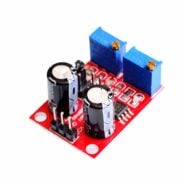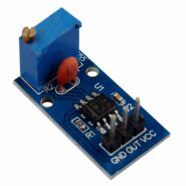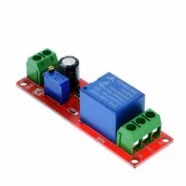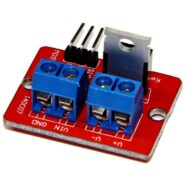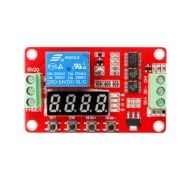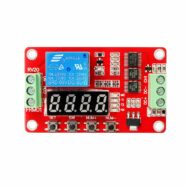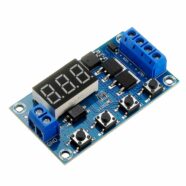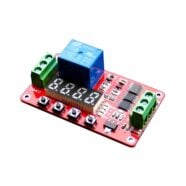Choosing a time delay module for your project? Need to be specific about this? Go through this article to find out.
Introduction
You may need a time delay circuit for a particular scenario. For example, you need to light an outpost for a specific period of time after a person passes by. Or, maybe you need to set a delay before closing a gate after a person goes through it. Whatever the reason, a pre-built programmable time delay module will be handy as you don’t need to create and assemble the circuit yourself. This article will help you get familiarized with these modules.

About Time Delay Circuits and Modules
These days, most time delay modules are composed mainly of integrated circuits along with passive components. Gone are the days where you need to calculate and set up timing parameters using resistive-capacitive combination circuits. The reason for this is most time delay modules are already programmable; they either have an IC with built-in flash capability or a chip that can be configured through potentiometers or jumper wires.
555 Timer Based Time Delay Modules
Some time delay modules use a timer chip (such as a 555 timer IC). These modules usually have short programmable time parameters. They range from a few milliseconds to a couple of minutes. They can usually be programmed through a potentiometer or jumper wires. Below are some examples of them.
-
Relays
12V Adjustable 0 To 10 Second Delay Relay Module – NE555
$14.95Original price was: $14.95.$13.95Current price is: $13.95.
Above, you can see that one module already has a relay where you can connect a heavy load such as a light source or a motor.
12V Adjustable 0 to 10 Seconds Delay relay Module NE555
You may need an external driver or a relay for modules that can’t handle heavy loads. There are several relay modules you can choose from at:
Or, you can opt for an external MOSFET driver for not so heavy loads such as:
MCU or Custom IC based Time Delay Modules
MCU or custom IC driven time delay modules provide more flexible trigger and timing delay parameters. You’ll also get a longer time delay sequence compared to a 555-timer based module. The delay you’ll get can vary from a few milliseconds to several days. Below are some examples of these modules:
-
Sale!
1 Channel Programmable Time Delay Relay Module – XY-J04
$18.95Original price was: $18.95.$15.95Current price is: $15.95. -
Relays
12V Programmable Multifunction Digital Relay Module – FRM01
$28.95Original price was: $28.95.$25.95Current price is: $25.95.
Above, for example, you’ll see the
12V Relay Module with External Trigger and Adjustable Timer – YYC-2
Accept several programming modes such as:
P-1: Delay ON after trigger (counts down the delay period set)
P-2: Delay OFF after trigger, then delays ON
P-3: Flip Flop mode, continually counts time OFF and ON from the time it was powered on.
P-4: Same as P-1 but is re-triggerable. If the trigger is high during the count down the timer will be reset and start the countdown again without deactivating the relay.
in 0-999 second time intervals.
Please check the Documentation tab of each product to check their support documentation.
Note that the:
1 CHANNEL PROGRAMMABLE TIME DELAY RELAY MODULE – XY-J04
uses a solid-state load control which looks cheaper than relay-controlled modules. You may use solid-state load control for lower power applications compared to relay-controlled loads.
Conclusion
Choosing the right time delay module can help your project achieve its goal. You should be aware of your time delay module’s capabilities and cost. Knowing these things, you will be able to optimize your project parameters and budget goals.

